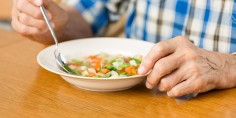Ramiro Mora knew it was serious when he was diagnosed with high blood pressure at age 29. Hypertension runs in his family, and he was aware of the risks of letting it go uncontrolled.
But Mora, a press brake operator who lives outside Charleston, South Carolina, sometimes forgot to take his medication. Or he’d skip it when he was feeling good.
“I’d take my pills for a while and then I’d stop,” he says. “But then I started having dizziness, and I wondered if my high blood pressure was the reason why.”
In 2013, Mora signed up to participate in a study to see if smartphone technology could be used to help patients manage their hypertension. Designed by researchers at the Medical University of South Carolina, the project is funded by a multi-year grant from The Duke Endowment.
Launching SMASH
Hypertension puts patients at risk of stroke, renal failure, coronary artery disease and heart failure, but it often lacks symptoms.
“Essential hypertension” — meaning that the cause of high blood pressure isn’t known — is the most commonly diagnosed chronic disease in the United States. Sticking to medication regimens helps patients control their hypertension, but experts say that average medication compliance rates hover at 50 percent.
The South Carolina study began in July 2012. It’s called SMASH, for Smartphone Medication Adherence Stops Hypertension.
In the first months, researchers gathered input from five focus groups, and finished software programming and beta testing. They then recruited 16 high-risk patients for a three-month proof of concept trial, with half of the patients randomly assigned to standard care. A six-month randomized clinical trial expanded the project to 48 patients in three South Carolina counties.
Study participants were given cellular-connected electronic trays with compartments for daily medication. Called the “MedMinder,” the tray was programmed to remind patients when to take their doses. The first reminder was a blinking light. The second was a loud chime. After that, the patient got an automated call.
Participants also received a portable blood pressure monitor to take reading every three days. Personalized smartphone-delivered motivational messages helped keep them on schedule. Physicians received weekly automated reports of their patients’ medication adherence and blood pressure levels.





